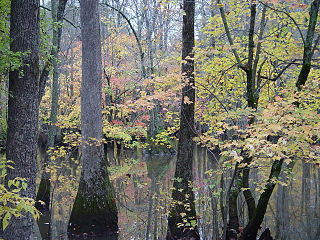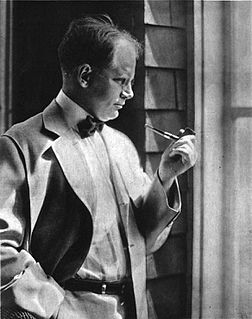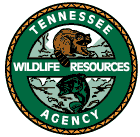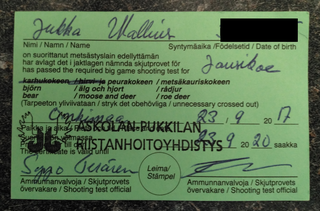Related Research Articles

The United States Fish and Wildlife Service is an agency of the United States Federal Government within the United States Department of the Interior dedicated to the management of fish, wildlife, and natural habitats. The mission of the agency is "working with others to conserve, protect, and enhance fish, wildlife, plants and their habitats for the continuing benefit of the American people."

The Cache River National Wildlife Refuge is a 68,993 acre (223 km2) (2014) wildlife refuge in the state of Arkansas managed by the United States Fish and Wildlife Service (FWS). The refuge is one of the Ramsar wetlands of international importance under the Ramsar Convention signed in 1971. It is one of the most important wintering area for ducks and the largest remaining tract of contiguous bottomland hardwood forest on the North American continent. In 2005, a possible sighting of the ivory-billed woodpecker, thought to be extinct, brought attention to the refuge.

The Federal Duck Stamp, formally known as the Migratory Bird Hunting and Conservation Stamp, is an adhesive stamp issued by the United States federal government that must be purchased prior to hunting for migratory waterfowl such as ducks and geese. It is also used to gain entrance to National Wildlife Refuges that normally charge for admission. It is widely seen as a collectable and a means to raise funds for wetland conservation, with 98% of the proceeds of each sale going to the Migratory Bird Conservation Fund.

Jay Norwood Darling, better known as Ding Darling, was an American cartoonist who won two Pulitzer Prizes. He was an important figure in the 20th century conservation movement. In addition, he was known to be close friends with Walt Disney.

The Kentucky Department of Fish and Wildlife Resources, an agency of the Kentucky Tourism, Arts and Heritage Cabinet, is responsible for the conservation of wildlife resources and for boating projects in the state. A commissioner appointed by the Fish and Wildlife Commission heads the department. The commission--which oversees the department's commissioner and promulgates regulations governing fishing, hunting and boating--is a nine-member bipartisan board appointed by the governor from a list of candidates nominated by active hunters and anglers in each of nine geographic districts in the state.

The National Wildlife Refuge System in the United States has a long and distinguished history.

The Tennessee Wildlife Resources Agency (TWRA) is an independent state agency of the state of Tennessee with the mission of managing the state's fish and wildlife and their habitats, as well as responsibility for all wildlife-related law enforcement activities. The agency also has responsibility for fostering the safe use of the state's waters through a program of law enforcement, education, and access.

A hunting license is a regulatory or legal mechanism to control hunting.

Sherburne National Wildlife Refuge is a National Wildlife Refuge of the United States in Sherburne County, Minnesota. The 30,700-acre (124 km2) refuge protects mixed habitat types including oak savanna, Big Woods, and wetlands. The St. Francis River flows through the eastern side of the park. Over 230 species of birds, 58 species of mammals, and 25 species of reptiles and amphibians have been recorded in the refuge.
A hunting season is the designated time in which certain game animals can be killed in certain designated areas. In the United States, each state determines and sets its own specific dates to hunt the certain game animal, such as California, in which they designate certain zones, in which each have their own separate dates in order to legally hunt.

The National Wild Turkey Federation is an international non-profit organization whose mission is 'the conservation of the wild turkey and the preservation of our hunting heritage.' It currently has more than 250,000 members in the United States, Canada, Mexico and 14 other countries.
Karen Latham is an American painter, residing in Hastings, Minnesota. Latham is most known for her realistic miniature paintings of wildlife. Latham is the mother of Bonnie and Rebecca Latham, also painters in the same style.
Maynard Fred Reece was an American artist based in Iowa whose work focused on wildlife, particularly ducks. He won the Federal Duck Stamp competition a record five times in his life: 1948, 1951, 1959, 1969 and 1971. Reece turned 100 in April 2020 and died in July that year.

Ottawa National Wildlife Refuge is a National Wildlife Refuge of the United States, which is located in the state of Ohio. This refuge was established in 1961, under the Migratory Bird Conservation Act, the purpose of the refuge being created was “… for use as an inviolate sanctuary, or for any other management purpose, for migratory birds.” 16 U.S.C. 715d. This refuge provides ideal habitat for a wide range for migratory birds and waterfowl, along with the native wildlife, and any endangered and threatened species. The property of the refuge was purchased from hunt clubs and farmlands with the Federal Duck Stamps.
The College of Natural Resources and Environment at Virginia Tech contains academic programs in forestry, fisheries, wildlife sciences, geography, and wood science. The college contains four departments as well as a graduate program in the National Capital Region and a leadership institute for undergraduates.

The Permanent Electronic Duck Stamp Act of 2013 is a bill that was introduced into the United States House of Representatives during the 113th United States Congress. The bill would authorize the United States Department of the Interior to issue electronic duck stamps as a form of Federal Duck Stamps.

The Black Duck Joint Venture is a conservation partnership established in 1989 to stabilize and restore the population of the American black duck. It consists of government and non-governmental agencies and organizations in Canada and the United States. Its geographical scope is the Canadian provinces of Ontario, Quebec, New Brunswick, Nova Scotia, Prince Edward Island, and Newfoundland and Labrador, and the 23 U.S. states in the Atlantic and Mississippi Flyways. It was the first of the three species joint ventures operating within the North American Waterfowl Management Plan to be established.
CIIT Philippines - College of Arts and Technology is a private, non-sectarian college, and digital arts school in the Philippines that offers specialized and industry-based learning in the fields of web design, multimedia arts, computer graphics, 3D animation, mobile app development, game development, software engineering, and information technology.
Leslie Carl Kouba was an American artist, author, outdoorsman, and businessman. He specialized in waterfowl paintings but is also known for his early sculpture of Dakota chief Little Crow, which was commissioned by the city of Hutchinson, Minnesota and installed in 1937 at a site overlooking the Crow River. In 1947, he invented the Art-O-Graph, a projector used to transfer a photo to layout. In 1982 he helped produce a new statue for this site, as the first had become weather beaten.

Patrick Ching (born c. 1963) is a Hawaiian conservationist and wildlife artist, ornithological illustrator, and author of children's books.
References
- 1 2 Victoria Taylor (May 3, 2013). "Girl, 6, reinstated as duck stamp art contest winner". NY Daily News. Retrieved January 14, 2015.
- 1 2 "Overview of the Junior Duck Stamp Program". US Fish & Wildlife Service. Retrieved October 23, 2007.
- ↑ Stephen Dinan (May 2, 2013). "Overview of the Junior Duck Stamp Program". Washington Times. Retrieved January 14, 2015.